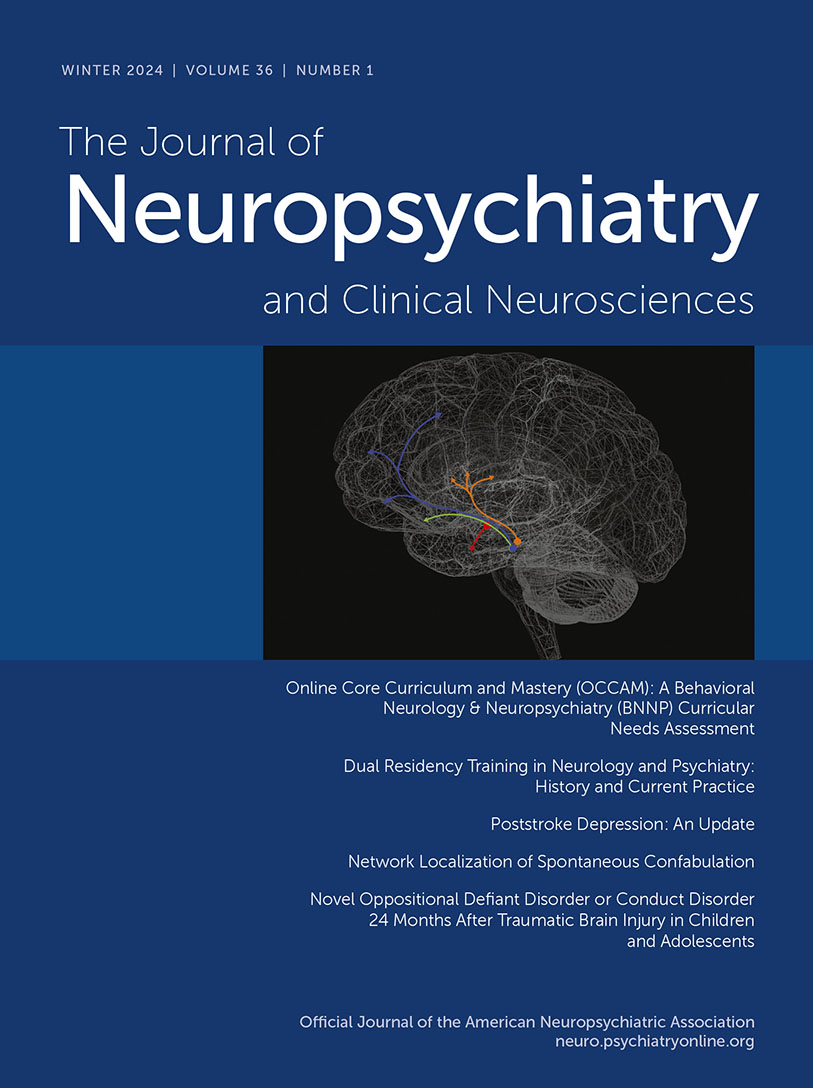Novel Oppositional Defiant Disorder or Conduct Disorder 24 Months After Traumatic Brain Injury in Children and Adolescents
Abstract
Objective:
The authors sought to identify predictive factors of new-onset or novel oppositional defiant disorder or conduct disorder assessed 24 months after traumatic brain injury (TBI).
Methods:
Children ages 5 to 14 years who had experienced TBI were recruited from consecutive hospital admissions. Soon after injury, participants were assessed for preinjury characteristics, including psychiatric disorders, socioeconomic status (SES), psychosocial adversity, and family function, and the presence and location of lesions were documented by MRI. Psychiatric outcomes, including novel oppositional defiant disorder or conduct disorder, were assessed 24 months after injury.
Results:
Of the children without preinjury oppositional defiant disorder, conduct disorder, or disruptive behavior disorder not otherwise specified who were recruited in this study, 165 were included in this sample; 95 of these children returned for the 24-month assessment. Multiple imputation was used to address attrition. The prevalence of novel oppositional defiant disorder or conduct disorder was 23.7 out of 165 (14%). In univariable analyses, novel oppositional defiant disorder or conduct disorder was significantly associated with psychosocial adversity (p=0.049) and frontal white matter lesions (p=0.016) and was marginally but not significantly associated with SES. In the final multipredictor model, frontal white matter lesions were significantly associated with novel oppositional defiant disorder or conduct disorder (p=0.021), and psychosocial adversity score was marginally but not significantly associated with the outcome. The odds ratio of novel oppositional defiant disorder or conduct disorder among the children with versus those without novel depressive disorder was significantly higher for girls than boys (p=0.025), and the odds ratio of novel oppositional defiant disorder or conduct disorder among the children with versus those without novel attention-deficit hyperactivity disorder (ADHD) was significantly higher for boys than girls (p=0.006).
Conclusion:
Approximately 14% of children with TBI developed oppositional defiant disorder or conduct disorder. The risk for novel oppositional defiant disorder or conduct disorder can be understood from a biopsychosocial perspective. Sex differences were evident for comorbid novel depressive disorder and comorbid novel ADHD.
Access content
To read the fulltext, please use one of the options below to sign in or purchase access.- Personal login
- Institutional Login
- Sign in via OpenAthens
- Register for access
-
Please login/register if you wish to pair your device and check access availability.
Not a subscriber?
PsychiatryOnline subscription options offer access to the DSM-5 library, books, journals, CME, and patient resources. This all-in-one virtual library provides psychiatrists and mental health professionals with key resources for diagnosis, treatment, research, and professional development.
Need more help? PsychiatryOnline Customer Service may be reached by emailing [email protected] or by calling 800-368-5777 (in the U.S.) or 703-907-7322 (outside the U.S.).



